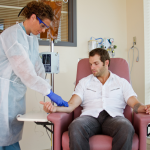The mental health field is vast and may not always be so simple to navigate. There is a world of conditions that require specific levels of care to treat mental health efficiently and appropriately. Mental health conditions range from mild, moderate, severe, profound, which gives insight into the severity of any given disorder. A few classifications of disorders may include personality disorders, mood disorders, eating disorders, substance use, psychotic disorders, and dementia. These categories of mental health take a broad overview of hundreds of specific conditions that require different treatment. In addition to severe mental health, one may battle situational misfortunes that need attention too. These may include grief, marriage, family conflict, trauma, abuse, divorce, parenthood, etc., and finding the appropriate level of care to address these concerns is also essential. The appropriate level of care will ensure you have access to professionals knowledgeable in treating those with compassion, extensive resources, and an individualized treatment plan.
In-patient:
In-patient treatment is a 24-hour secure treatment facility where an individual receives services. This facility is paired psychiatrically with medical care within a hospital setting. One can be admitted for a few days up to about 60 days for stabilization, including voluntary and involuntary admission. Depending on the state, one can be involuntarily admitted to this level of care if they are at imminent risk of harming themself or others. In-patient treatment assesses severe mental health conditions, suicide risk factors, and medication benefits to improve one’s mental state. During this intensive period, you will meet one on one with a psychiatrist who will offer insight and recommendations from a clinical perspective. In-patient psychiatric treatment may also include brief individual therapy but focuses on acute care for those in crisis. In-patient treatment is also appropriate for those battling addiction. There is a detox period of 3-7 days, depending on the drug and duration of use. It is necessary to complete detox in a monitored setting, such as a detox unit or in-patient facility, especially for alcohol, opiate, and benzodiazepine use. Common benzodiazepines include Xanax, Klonopin, Valium, Ativan, etc. Withdrawal symptoms may include hallucinations, seizures, psychosis, or suicidal ideations. Additional withdrawal symptoms are flu-like and can be associated with emotional symptoms. Medical staff will monitor the withdrawal process and create an aftercare plan with the medical team to offer resources and referrals for the next steps. Depending on the severity, one may be referred to additional treatment in a different level of care.
Rehabilitation:
Like in-patient treatment, rehabilitations offer a place to receive specific treatment for disorders such as addiction treatment, eating disorders, OCD, severe mental health, etc. They are well equipped to address co-occurring conditions. Rehabilitations centers are voluntary and long-term facilities where one will reside to understand their symptoms and build on different skill sets. During this time, one will receive psycho-education, individual and group therapy. The approach within rehab is to educate on symptoms, understand specific triggers, and develop strong coping skills to live a healthier quality of life once the program is complete. These programs can last between 30 days to 90 days for short-term rehab and 6-12months for long-term rehabilitation. These options are available based on your need and ability to commit to treatment for an extended time. Rehab guarantees a safe environment free of external triggers to increase your ability to succeed. After completing rehab, you may explore another level of care to continue ongoing treatment from home.
Partial Hospitalization Program (PHP):
A Partial Hospitalization is a form of treatment between in-patient and outpatient programs. This level of care is less intensive considering one is not monitored by staff 24/7 and instead attends program within a hospital setting 5x a week for about 4-6 hours each day. People typically return to their home environment or sober living facility/halfway house once treatment is complete for the day. Resources offered in this level of care will include psychotherapy, medication monitoring, mood management, etc. One will continue to learn about themself in a productive way to build self-awareness, coping skills, conflict resolution, appropriate socialization, and setting boundaries. These are all core components of ensuring one has a well-developed skill set to overcome triggers and barriers in their everyday life. PHP lasts about 4-6 weeks until the individual has demonstrated a level of independence that no longer requires this level of care. They may then consider an even less intense treatment option.
Intensive Outpatient Treatment (IOP/OP):
Intensive Outpatient treatment is a certain level of care that continues treatment while an individual lives in their home environment and goes to treatment 4-5x per week for a few hours. Another option for Outpatient treatment decreases the frequency of treatments to 2-3x per week for a few hours. Within this level of care, one will work towards bettering their mental health and accomplishing specific goals. There is still an emphasis on individual and group therapy, although less frequent. IOP/OP is most appropriate once one feels they have control over their disorder and can manage it within their home, considering different stress factors and triggers that may arise. Since the frequency of outpatient treatment is less demanding, one can return to previous tasks, like work, school, social events, etc., due to the flexibility. Intensive Outpatient and Outpatient treatment may be ongoing for several months or possibly up to a year based on the need.
Psychotherapy:
Talk therapy is a level of care for individuals seeking mental health treatment within a private and casual setting. Psychotherapy is at least weekly for most practices, sessions lasting between 45-60min. Over time, one will build a close relationship with their therapist and tailor a specific treatment plan with goals, objectives, and specific techniques to address a diagnosis. Therapy may decrease in frequency to bi-weekly once there is rapport and the presenting issues are manageable. Short-term therapy is under two years, and long-term therapy is beyond two years of treatment. Many also offer couples therapy, marital counseling, family therapy, and group therapy. Psychotherapy may incorporate branches of different modalities, Cognitive Behavioral Therapy (CBT), Dialectical Behavioral Therapy (DBT), Rational Emotive Behavioral Therapy (REBT), Applied Behavior Analysis (ABA), etc. Split therapy is also a common form of psychotherapy paired with a psychiatrist who can prescribe specific medication to help manage symptoms of a disorder. Benefits of split therapy include connecting with another professional who will work collaboratively with your therapist with medication as an additional resource. Depending on the presenting diagnoses, we will focus on learning who you are, developing goals together, understanding strengths and weaknesses to tailor sessions specific to your needs. At GTS, these techniques are used collaboratively with our humanistic approach to address presenting concerns, symptoms and ensure one can reach their highest potential.
Neuropsychological testing:
Neuropsychological testing is an exam used to understand your brain functioning. It’s most appropriate to use it when one notices a change in their mental state, way of thinking, or erratic behavior. Doctors will review your cognition, memory, motor skills, perception, speech, reasoning, etc. The doctor may ask to repeat a set of words, lists, interpret categories, form words specific to given letters, test vision and hearing exams, as well as use your hands separately to conclude functioning. Our brain changes over time, and if there are instances of traumatic brain injury due to an accident or trauma, doctors can assess the damage by completing a full neuro exam. Neuropsychologists will interpret the results to determine the impact and conclude intellectual, developmental, and cognitive disorders. These may include variations of Autism, ADHD, dementia, Alzheimer’s, Parkinson’s, which is beneficial to understand the relationship between the brain and individual behavior. Neuro testing can be completed directly with a neuropsychologist to understand mental and emotional status.
While moving through the system of levels of care may be overwhelming, there is comfort in understanding the many resources and tools to address mental health. There are different factors to consider when selecting the most appropriate level of care for you. A few of these factors may include diagnoses, severity, home environment, insurance, and budget. Living with severe mental health diagnoses, co-occurring disorders, or battling addiction may require a higher level of care to begin the process of stabilization. If one feels they cannot manage symptoms alone, or if they continue to spiral with a lack of control paired with triggers, this may also be a sign to explore a higher level of care. If you have active insurance, seek information about coverage, benefits, both in-network and out of network, to maximize your options. Understand that In-patient treatment and rehabilitation centers may be more costly due to needing 24/7 treatment. While finances may be a factor in your selection of mental health treatment, prioritize the care that will be most beneficial to treat your condition for the long term.
References



